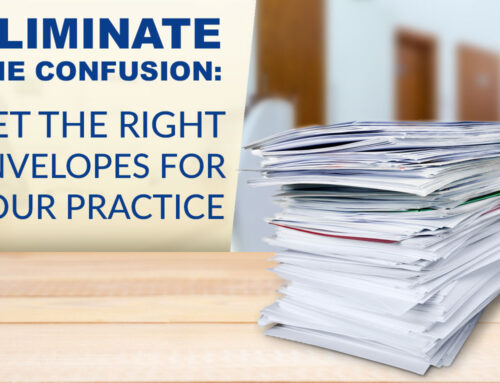Hydrocortisone-17-butyrate (H-17-B) is a midstrength (methylpred-nisolone aceponate type) corticosteroid (see the September 2017 issue), most often used to treat inflammatory skin diseases and psoriasis. H-17-B, which is a Coopman Group D2 steroid and may be the third most sensitizing corticosteroid after tixocortol pivalate (see the March 2018 issue) and budesonide (see the June 2018 issue), is the patch test marker for D2 steroids. Of the 2% of patients who exhibited a corticosteroid allergy in a large Danish study, the overall rate of positive reactions to H-17-B was 1%. In North America, the prevalence of positive reactions to H-17-B has been slightly lower, ranging from about 0.1 to 0.7%. Positive reactions to H-17-B, however, tend to have high clinical relevance—almost 80% in one study from the North American Contact Dermatitis Group (NACDG).
Patients may be exposed to H-17-B in many over-the-counter and prescription pharmaceuticals. In the work environment, it may be encountered in a variety of medicaments formulated in creams, lotions, ointments, and powders. At home, patients may be exposed to H-17-B in the same formulations used to treat eczema and other localized skin inflammations; in ear, nose, and eye drops; and in rectal suspensions. Skin-to-skin transfer of the allergen can also elicit a dermatitic outbreak (i.e., consort dermatitis) if a spouse, children, or other individuals with whom patients have close contact use such topical preparations.
Corticosteroid hypersensitivity, both in general and specifically to H-17-B, tends to be a treatment-related contact allergy. Factors found to be associated with allergy to H-17-B have included occupational dermatitis, age older than 40 years, and, most significantly, duration of dermatitis. Like tixocortol pivalate, H-17-B is a popular topical medicament. In contrast to tixocortol, however, which is associated with both atopic dermatitis and leg dermatitis (for example, from its use to treat stasis dermatitis or leg ulcers, particularly in the elderly), no association has been found between sensitization to H-17-B and these conditions.
As with other corticosteroids, diagnosing sensitization to H-17-B can be challenging. Failure of a skin condition to improve or one that worsens when treated with H-17-B can be a symptom of sensitization. Improvement of a patient’s dermatitis when treatment is stopped can also signal an allergy to H-17-B. A rare manifestation of allergic contact dermatitis (ACD) related to H-17-B is a skin eruption that mimics acute generalized exanthematous pustulosis, and ACD involving the face has mimicked papular rosacea in at least one reported case.
For patch testing, some clinicians have recommended using H-17-B in ethanol (allergEAZE NA69), which is thought to enhance penetration of the allergen. The timing of readings is another consideration. Delayed readings (i.e., at day 7) are often recommended for corticosteroids, including H-17-B. Reactions to H-17-B, however, can disappear relatively rapidly, a phenomenon that may be related to the metabolism of the allergen in the skin. Therefore, reading H-17-B only at day 7 may be associated with an unacceptably high rate of false-negative reactions. Clinicians must remember that patients can have a negative patch test reaction to any corticosteroid, including H-17-B, even when they are truly sensitized; the response reflects the inherent immunosuppressant property of the drugs.
Metabolically, H-17-B is first converted to hydrocortisone-21-butyrate and then to hydrocortisone, a Group A steroid. Consequently, cross-reactivity between H-17-B and Group A steroids can occur. Patients allergic to H-17-B may need to avoid steroids in both Group D2 and Group A. Concomitant reactions between H-17-B and the Group B steroid budesonide have also been reported. Sensitized patients should check all anti-inflammatory preparations (prescription and nonprescription) for H-17-B as well as for related corticosteroids and should ask their pharmacist if they are uncertain whether a medication contains the allergen. Patients must inform their health care providers and ask them to use or prescribe products that are free from H-17-B and related corticosteroids. Sensitized patients should avoid products that list the following ingredients: h.17b, Laticort, locoid, hb(sub 17), Alfason, Cortisol 17-butyrate, Plancol, and Hydrocortisone butyrate as well as to those listed in Table 1.
Markers for corticosteroids in groups C and D1 are also available: clobetasol-17-propionate for the former and desoximetasone for the latter. Overall, sensitization to these corticosteroids appears to be rare. For example, as of the year 2000 only four cases of ACD to clobetasone butyrate had been reported, and, based on a recent analysis, desoximetasone, at least in a topical spray formulation, appears to have little potential for sensitization (or irritation). Based on NACDG data, the prevalence of positive patch test reactions to clobetasol has ranged from 0.3 to 0.7% while that of desoximetasone has been 0.2% or less.
When H-17-B is combined with the other major markers for corticosteroid allergy, tixocortol pivalate and budesonide, 80% of patients who are allergic will be identified. These three markers are included on T.R.U.E. TEST® to make screening for corticosteroid allergies easy and are, of course, also available from allergEAZE in petrolatum formulations. Desoximetasone (NA68) is available in a petrolatum formulation while Clobetasol-17-propionate is offered in both ethanol (CS998) and petrolatum (CS492, NA20) formulations. Corticosteroids and their role in ACD are complicated. So, if you still have questions about which products would best serve the needs of your practice, our friendly sales representatives are available to answer your questions at 1-800-878-3838.
Suggested Readings
Pratt M, Mufti A, Lipson J, et al. Patch test reactions to corticosteroids: retrospective analysis from the North American Contact Dermatitis Group 2007-2014. Dermatitis 2017;28(1):58-63
Nadkarni A, Saleem MD, Feldman SR. Topical desoximetasone 0.25% spray and its vehicle have little potential for irritation or sensitization. J Drugs Dermatol 2017;16(8):755-758
Hoffman LK, Kircik L. Efficacy and safety of desoximetasone 0.25% spray in adult atopic dermatitis subjects: pilot study. J Drugs Dermatol 2017;16(9):919-922
Warshaw EM, Maibach HI, Taylor JS, et al. North American Contact Dermatitis Group patch test results: 2011-2012. Dermatitis 2015;26(1):49-59
Wentworth AB, Yiannias JA, Keeling JH, et al. Trends in patch-test results and allergen changes in the standard series: A Mayo Clinic 5-year retrospective review (January 1, 2006, to December 31, 2010). J Am Acad Dermatol 2014;70:269-275
D’Erme MA, Gola M. Allergic contact dermatitis induced by topical hydrocortisone-17-butyrate mimicking papular rosacea (letter). Contact Dermatitis 2012;23(2):95-96
Vind-Kezunovic D, Johansen JD, Carlsen BC. Prevalence of and factors influencing sensitization to corticosteroids in a Danish patch test population. Contact Dermatitis 2011;64:325-329
Broesby-Olsen S, Clemmensen O, Andersen KE. Allergic contact dermatitis from a topical corticosteroid mimicking acute generalized exanthematous pustulosis. Acta Derm Venereol 2005;85(5):444-445
Isakkson M, Bruze M. Corticosteroids. Dermatitis 2005;16(1):3-5
Isaksson M. Corticosteroids. Dermatologic Therapy 2004;17:314-320
Isaksson M, Andersen KE, Brandao F, et al. Patch testing with corticosteroid mixes in Europe: A multicentre study of the EECDRG. Contact Dermatitis 2000;42(1):27-35
Dooms-Goossens A, Morren M. Results of routine patch testing with corticosteroid series in 20173 patients. Contact Dermatitis 1992;26:182-191








